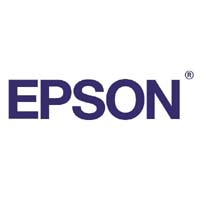While a few print houses have switched to 100% soft proofing, most tend to run both options alongside one another. When done properly, digital and soft proofing offer similar results, although the “soft-proof user needs to consider many of the issues associated with the paper variety”, says Chris Burn, system solutions specialist at Agfa.
More automation
One of the main aims of soft-proofing is to shorten the approval cycle and to make the process more automated. The system must be integrated and, if the proof is sat in someone’s FTP folder, it’s no better than being sat in a courier’s bag, says Burn. For major contracts where high volumes are being produced, online proofing saves time, especially if the customer is international, and it is also more environmentally friendly.
“At the moment, most end users are not viewing soft-proof in a colour-accurate environment, but this will change. So, make sure you select a system with ‘closed loop’ viewing capabilities for the future,” says Burn.
In hard-copy proofing, engines offered by leading manufacturers are all pretty similar, so workflow often becomes the deciding factor when making a purchase. It’s worth bearing in mind that, with standalone proofer RIPs, printers cannot track the job status or usage via a management information system. Also, prior to making an investment, potential purchasers should check whether colour-managed viewing is required. “The viewer will need a high-quality gamut monitor. The average £200 flat panel display is not capable of representing all colours within the gamut of popular printing standards,” says Burn.
Other things to bear in mind when purchasing a proofer are factors such as the frequency of proof production.
The main issue for many is broadband infrastructure. If you want to make large volumes of rendered files available to your clients, standard broadband upload speeds are usually not good enough. “Download bandwidth is cheap, but if you want even one or two MB upload, this comes with a price tag and in some areas may be unavailable,” cautions Burn.
WHAT’S NEW IN PROOFERS
• Epsom (UK)-based Targetcolour won an order to supply the Guardian Weekend supplement with a colour processing and paperless proofing solution. The project, announced in February, includes the installation of ICS Remote Director virtual proofing technology
• Kodak’s Graphic Communication Group has thrown its hat into the colour management arena at this year’s Drupa, with the first public outing of its Colorflow system. The software provides integrated colour control across monitors, scanners, halftone and inkjet proofers, as well as digital and conventional presses
• Canon has released new software at Drupa to enable its system to remotely monitor the calibration status of a client’s soft-proofing monitor. This ensures that proofs are being viewed in an appropriate way. Each time a page is approved, the calibration status is noted in the log
• OKI has partnered with EFI to produce a colour proofing software and kit package, the C9650XF, for short digital runs and content lay-out proofs
Read the original article at www.printweek.com.
Comment below to have your say on this story.
If you have a news story or tip-off, get in touch at editorial@sprinter.com.au.
Sign up to the Sprinter newsletter


